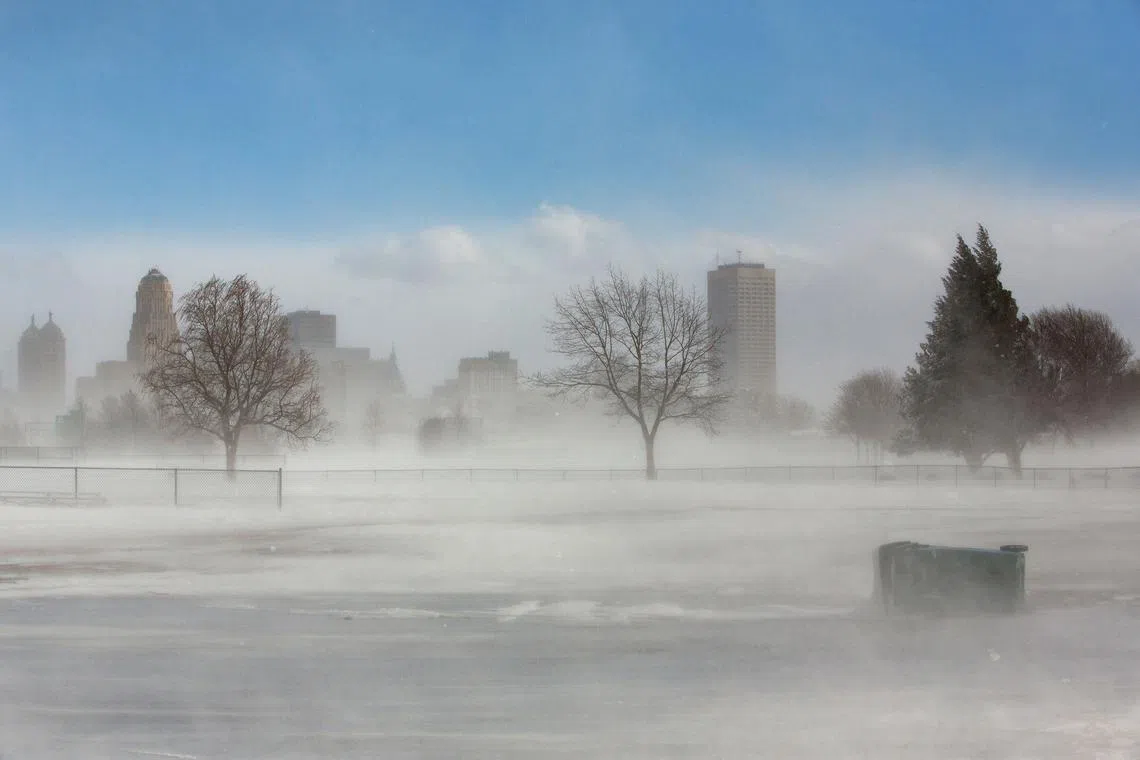Polar vortex set to envelop much of US in freezing temperatures
Sign up now: Get ST's newsletters delivered to your inbox

A 2019 photo shows the city skyline of Buffalo, New York, during a polar vortex.
PHOTO: REUTERS
Follow topic:
WASHINGTON – A blast of Arctic air is set to cover much of the United States with temperatures below freezing starting on Jan 17 and into next week, impacting millions of Americans in nearly all of the contiguous states.
Temperatures will reach as low as minus 12 deg C in the northern plains and upper Midwest, into the teens in the central plains and Midwest, and minus 1 deg C in parts of the south on Jan 18, before the front moves into the east coast and the south-east on Jan 20, the US National Weather Service (NWS) said.
Americans living as far south as the southern plains can expect to see sub-zero wind chills beginning on Jan 19 night, said Mr Zack Taylor, a meteorologist with NWS’ Weather Prediction Centre.
“That will actually linger for several days for much of the southern US, Ohio Valley, mid-Atlantic and the north-east as we get into early to mid-next week,” he said.
The coldest weather of the season to date will be due to a phenomenon called a polar vortex, an upper-level jet stream that typically circulates around the North Pole and South Pole, but can push cold winds down into the US and Canada when it weakens and expands.
The bitter cold temperatures will bring “life-threatening” risks of hypothermia and frostbite, the NWS warned.
US President-elect Donald Trump said on Jan 17 his inauguration will be held indoors
States from Virginia up into New England could see heavy snow along with frigid temperatures, with Washington, DC, Baltimore, Philadelphia, New York City and Boston potentially receiving several inches of snow.
Southern states could also get snow and ice from a separate storm starting on the night of Jan 20 across portions of Texas that may spread as far south as the Gulf Coast, said Mr Taylor.
“That’s something that we are keeping a close eye on, given the sensitivities of those not accustomed to winter weather and not used to those kinds of situations,” he said. REUTERS

